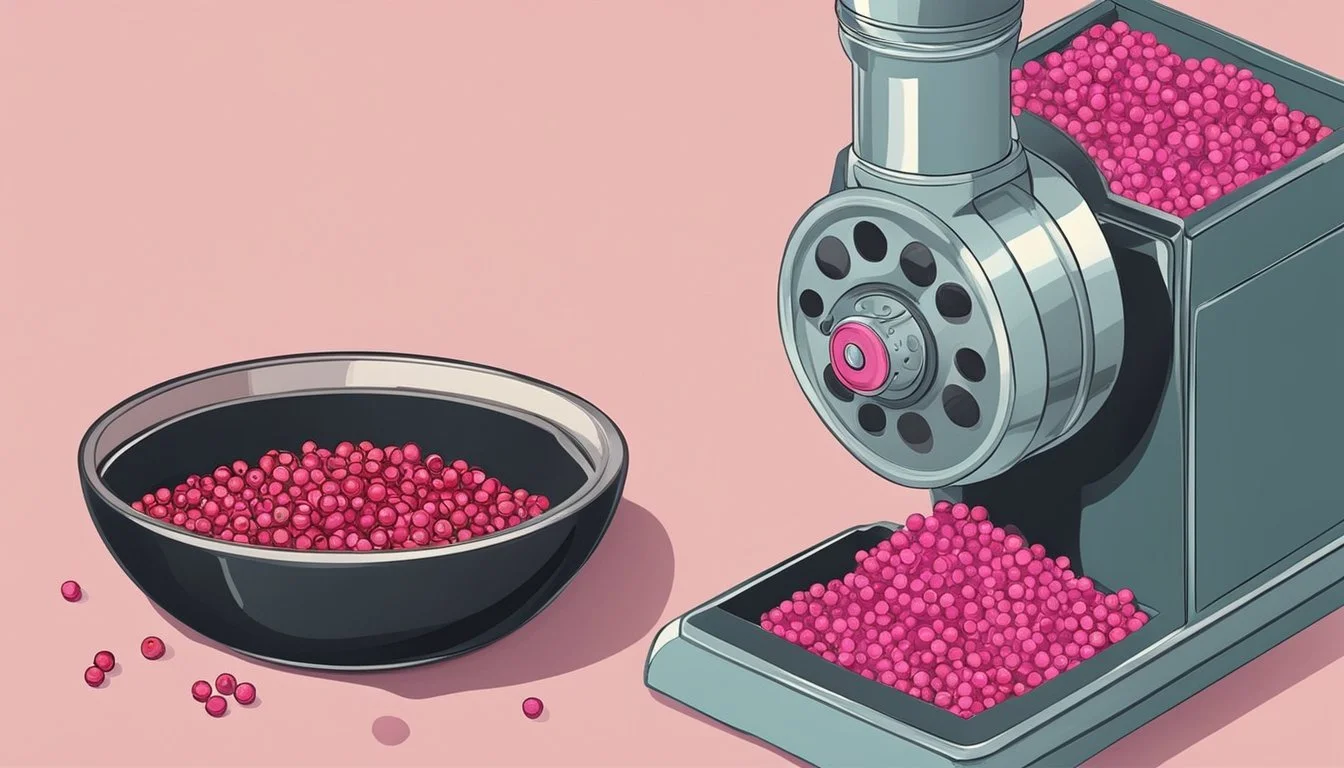How to Substitute Pink Peppercorns for Black Peppercorns
A Flavorful Switch
Pink peppercorns offer a sweeter, fruitier, and less pungent alternative to black peppercorns. Chefs and culinary enthusiasts may seek to replace black peppercorns with pink ones, desiring the subtle differences in flavor profiles to elevate their dishes. The distinct flavor of pink peppercorns, which is considered more delicate and less sharp than that of their black counterparts, can impart a unique twist to recipes traditionally grounded in the robust heat of black pepper.
When substituting pink peppercorns for black, it is important to consider the intended flavor balance of the dish. Because pink peppercorns are milder and carry a slightly sweet taste, one might adjust the quantity used to achieve the desired effect. A direct one-to-one substitution can work, but adjustments should be made to taste, especially for those seeking to maintain a certain level of heat that black peppercorns typically provide.
It should be noted that, despite their name, pink peppercorns are not true peppercorns but the dried berries of the Baies rose plant. As such, for individuals with dietary restrictions or allergies, it's advisable to ensure compatibility. Pink peppercorns can often be found in gourmet food stores or specialized spice markets and are an appealing addition to dishes needing a nuanced peppery flavor without the intense kick of black pepper.
Understanding Peppercorns
Peppercorns, the dried berries of the Piper nigrum plant, offer a range of flavors and uses in culinary practices. The choice of peppercorn type can have a significant impact on the taste profile of a dish.
Varieties of Peppercorns
True peppercorns originate from the Piper nigrum plant and come in several varieties, each with unique characteristics:
Black peppercorns: They are picked when almost ripe and sun-dried, causing the outer layer to blacken.
White pepper: Consists of the seed of the peppercorn with the outer layer removed.
Green peppercorns: Harvested while unripe and usually preserved in brine or vinegar.
Pink peppercorns: Not true peppercorns, but the dried berries of the Peruvian pepper tree or the related Brazilian pepper tree.
Pink Peppercorn Characteristics
Pink peppercorns are not related to the Piper nigrum plant but still share a peppery quality. They are:
Softer and less pungent than true peppercorns.
Sweet and fruity in profile.
Black Peppercorn Profile
Black peppercorns, the most commonly used form, have a:
Strong, pungent flavor.
Heat that comes from the compound piperine.
Flavor Considerations
When substituting pink peppercorns with black peppercorns, understanding their distinct flavor profiles is crucial for maintaining the integrity of a dish.
Comparing Flavors
Pink peppercorns are known for their delicate flavor with fruity undertones, which can impart a complex flavor profile to dishes. They possess a milder taste than black peppercorns and are often described as having a slight citrusy note. In contrast, black peppercorns are recognized for their bold and pungent flavor, which can contribute a sharp spiciness to culinary creations.
Pink Peppercorns: Delicate, fruity undertones, mild, citrusy
Black Peppercorns: Bold, pungent, sharp spiciness
The Role of Peppercorns in Cooking
Peppercorns serve as a fundamental spice in cooking, with the ability to elevate the overall flavor of a dish. They are not merely a source of heat; they're a vital ingredient that provides a depth of flavor and aromatic quality. When one replaces pink peppercorns with black peppercorns, they must be mindful that the pungency and intensity of the latter might overpower more subtle flavors. It is important to adjust quantities appropriately to ensure the unique taste of the original recipe is respected as much as possible.
Flavor Depth: Peppercorns add depth to a dish beyond just spiciness.
Aromatic Quality: Peppercorns contribute to the aroma, enhancing the sensory experience of the meal.
Quantity Adjustment: Use a careful hand when substituting to maintain balance in the dish’s flavor profile.
Culinary Uses
When substituting pink peppercorns for black peppercorns in culinary preparations, one must consider the flavor profile and intensity of the respective peppercorn. Here's how to incorporate each type into various dishes.
Typical Uses for Black Peppercorns
Black peppercorns are a staple in a variety of dishes due to their pungent, sharp flavor that adds depth and complexity. They are commonly used in:
Cooking: Integral in seasoning meats, poultry, and fish.
Sauces and Marinades: Crushed peppercorns infuse boldness in gravies, barbecue, and steak sauces.
Soups: Whole or cracked peppercorns provide a spicy note to broths and creamy soups.
Salads and Dressings: Often found finely ground in vinaigrettes, accentuating the taste of greens and vegetables.
Chinese Cuisine: Essential in Sichuan and other regional cooking styles, peppercorns highlight the flavors of stir-fry and noodle dishes.
Seafood: Whole peppercorns are sometimes included in poaching liquids for shellfish, enhancing the natural sweetness.
Pink Peppercorn Applications
Pink peppercorns, though not true peppercorns, offer a fruitier, milder heat and are used in more delicate culinary creations. Their culinary applications include:
Desserts: Their slight peppery yet sweet notes are used to enhance fruit tarts and chocolate confections.
Seafood: They provide a subtle, aromatic heat without overpowering delicate fish flavors.
Salads: Crushed pink peppercorns add a visually striking and flavorful twist to fresh green salads.
Vegetables: They complement the taste of roasted or sautéed vegetables with their light spiciness.
By carefully considering these uses, chefs can create balanced and flavorful dishes with the appropriate peppercorn.




